
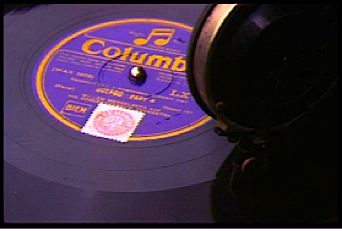

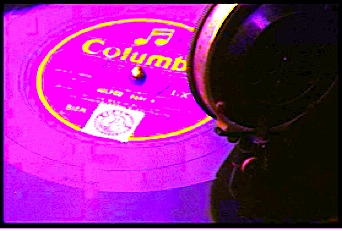
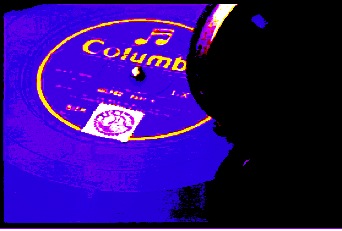
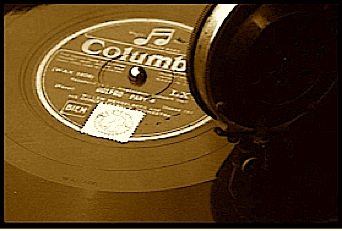
I got so carried away last time — urging all of you (a) to regard the revision process as an opportunity to discover the strengths in your manuscript, rather than the far more common method of concentrating exclusively upon the weaknesses, (b) being delighted to discover that you’re really, really talented at some very specific type of writing (who knew that you were the go-to writer for descriptions of buggy wheels in motion, for instance?), and (c) conceivably acting upon that discovery by reworking the manuscript to emphasize your strengths — that I fear one of my more important subsidiary points might have gotten a bit lost in the public rejoicing. Therefore, let me begin today by un-burying that lead.
Even if you chose to blow off 99.2% of my advice in general, please, I implore you, follow it in this one respect: make absolutely, positively certain that your first five pages do not read like a Frankenstein manuscript — or definitely will not before you even consider slipping them into an envelope with a SASE and mailing them off to an agent, editor, or contest.
Don’t just make a vague, affirmative-sounding noise in response to that. I’m waiting to hear an actual promise.
Why, you ask, when I’m writing this on a blog stuffed to the proverbial gills with literally thousands of pages of advice for writers, am I being so adamant about this little gem — and why only the first five? I’m requesting it for your long-term happiness, especially if you happen not to be the lucky beneficiary of limitless time on your hands to devote to revision.
I’m just being practical here, you see. Naturally, you will want your entire narrative to be in a consistent, well-crafted voice; indeed, that should be the long-term goal for any book-length piece. Were it entirely up to me, every writer would have the time to polish his work until it was positively reflective before submitting it.
But that’s not a luxury an aspiring writer has in this rough-and-tumble world, is it?
The fact is, if you’re in a rush to get your submission out the door — and who isn’t, right after pitching at a conference or receiving that long-awaited query response — you may not have either the time or the patience for a complete revision. And while I would NEVER suggest that ANY writer should send even a single page of requested materials WITHOUT having read that submission IN ITS ENTIRETY, IN HARD COPY, and OUT LOUD, and every conference season, I type my fingers to the elbow pointing out to any writer who will listen that it’s actually a really, really poor idea to send out those materials immediately after receiving the request, precisely because doing so by definition doesn’t leave time for a last-minute read-through, I do recognize that deadlines, self-imposed and otherwise, do exist.
I do not concede, however, that anyone who has the time to write a manuscript does not have time to quadruple-check that her first five pages are written in a consistent, flowing, entertaining narrative voice. Nor can I easily envision a real-world submission situation where even the agent of that writer’s wildest dreams would not be willing to wait a week or two — nay, prefer to wait a week or two — to receive requested materials if they would be better-written after the lull.
Hey, it’s not as though that requesting agent is just going to drop everything, waiting for your submission to show up, or is even likely to blink if it takes them a month or two to arrive. Agents are busy people, after all, and they ask to see quite a few manuscripts.
Besides, isn’t submitting incompletely-revised writing a trifle self-defeating? It’s up to you how to invest your time and energy, of course; it’s not as though the Submission Police are going to break down your door to prevent you from hitting the SEND button with the first 50 pages of a Frankenstein manuscript attached. But given the rate at which Frankensteinery tends to get rejected, isn’t it worth taking the time to improve your odds of acceptance a little?
Which brings me to the question of why the first five pages are so important. As we’ve been discussing throughout this series, Millicent is not merely on the look-out for a well-written manuscript, or one that is simply free of technical errors: she is searching for a narrative voice that she believes her boss will (a) like and (b) be able to sell.
If the first five pages of a submission do not establish that voice, few professional readers will continue reading beyond them. While an agent will occasionally pick up an uneven manuscript if she enjoys the overall voice, the Millicent who screens her submissions will, in all likelihood, have made up her mind about the marketability of that voice by the bottom page 5, at the latest.
And that’s assuming that page 1 was close enough to flawless, technically speaking, to tempt her to keep going. Not to mention well-written, presenting an interesting story, and sounding like the kind of book Millicent’s boss habitually represents.
So again: please promise me that you’ll tinker with at least those first five pages until they’re lovely. It’s in your book’s best interest.
After you’ve roll up your metaphorical sleeves to launch into that worthy endeavor, you might want to start by keep an eye out for a very, very common type of textual repetition, especially in book openings end endings: invocatory rhythms that don’t quite work.
Invocatory rhythms are one of the most popular tools aspiring writers use to beautify their narratives, a kind of sing-song rhythm that alerts the reader that Something Literary is Going on Here. Often couched in generalities about the human condition, a well-written invocatory opening can provide a philosophical starting-point, preparing the reader’s mind, as it were, for the specific story to come — or that has just concluded.
More importantly, though, an invocatory rhythm is a species of seduction: conveys a sort of music that draws the reader irresistibly. I’ve read openings that one could practically sing. Take, for instance, the opening paragraph of Truman Capote’s Breakfast at Tiffany’s:
I have always been drawn back to places where I have lived, the houses and their neighborhoods. For instance, there is a brownstone in the East Seventies where, during the early years of the war, I had my first New York apartment. It was one room crowded with attic furniture, a sofa and fat chairs upholstered in that itchy, particular red velvet that one associates with hot days of a train. The walls were stucco, and a color rather like tobacco-spit. Everywhere, in the bathroom too, there were prints of Roman ruins freckled brown with age. The single window looked out on a fire escape. Even so, my spirits heightened whenever I felt in my pocket the key to this apartment; with all its gloom, it still was a place of my own, the first, and my books were there, and jars of pencils to sharpen, everything I needed, so I felt, to become the writer I wanted to be.
Feel that gently galloping rhythm? Compelling, no? we could quibble about some of dear Truman’s editorial choices — I, for one, probably would have taken him to task for those two ands in the final sentence, and many a modern-day Millicent might reject this opening on sight as leaning too heavily on the passive voice — but you can’t deny that it sets a mood.
Partially, the narrative achieves that through invocatory rhythm — and to many a writer, and to many a professional reader, too, that “Ready or not, Muses, here I come!” rhythm is what differentiates the opening of a good book from the writing in the rest of the text. That, and because those golden words happen to fall on page 1, so they’re the first taste the reader gets of the author’s voice.
I’m sensing that some of you out there are shaking your heads, perplexed. “Rhythm?” you call out between well-timed shakes 34 and…35. “I’m not really getting what you mean. I can see that it’s well-written, crammed with the telling details you’re always…” (36) “…going on about, but rhythm is something heard with the ears, right, not seen with the eyes?” (37)
Well, no — although it’s a moot point if you’re reading the page IN ITS ENTIRETY and OUT LOUD. An experienced reader can feel rhythm on the page; it’s part of what keeps Millicent turning pages. To a professional reader, it’s a manuscript’s heartbeat.
Which is why, in case you’d been wondering, I’m bringing it up in this series on Frankenstein manuscripts. All too often, a manuscript will open with a nice, musical rhythm, only to drop it somewhere around page 5. (Hey, I didn’t pick that barrier arbitrarily — that’s around the end of most manuscript’s first scenes.) Or to begin another halfway down page 2. Sometimes, the switch is jarring enough that the text just before and just after the switch read like two different authorial voices.
Sound familiar? It should: it’s one of the defining characteristics of the Frankenstein manuscript. Need I say more?
I should, actually — or so the head-shakers from a few paragraphs ago tell me. Try reading the opening of Jerzy Kosinski’s marvelous political satire, Being There, first silently, then, if you haven’t taken a vow of silence (or are not perusing this blog at work), read it again out loud.
It was Sunday. Chance was in the garden. He moved slowly, dragging the green hose from one path to the next, carefully watching the flow of water. Very gently he let the stream touch every plan, every flower, every branch in the garden. Plants were like people; they needed care to live, to survive their diseases, and to die peacefully.
Did you catch it that time? This is a particularly nice example: the rhythm begins slowly, then gradually builds up speed, as if the garden were awakening in the first light of morning; by the third sentence, the narrative moving forward at a strong beat. That’s far from accidental: the third sentence repeats the same word thrice, a rhythm continued by the list of three essential needs of people in the final sentence. Well done, Jerzy!
Still not hearing it? Okay, you’ve left me no choice; I’m going to get completely ruthless. Take a gander at what is arguably the most famous example of invocatory rhythm in American literature, the ending of The Great Gatsby, by F. Scott Fitzgerald. (Yes, he of “Oh, I’m so beautiful — why can’t I be happy?” fame.)
And as I sat there brooding on the old, unknown world, I thought of Gatsby’s wonder when he first picked out the green light at the end of Daisy’s dock. He had come a long way to this blue lawn, and his dream must have seemed so close that he could hardly fail to grasp it. He did not know that it was already behind him, somewhere back in that vast obscurity beyond the city, where the dark fields of the republic rolled on under the night.
Gatsby believed in the green light, the orgiastic future that year by year recedes before us. It eluded us then, but that’s no matter — tomorrow we will run faster, stretch our arms out farther…and one fine morning–
So we beat on, boats against the current, borne back ceaselessly into the past.
If you can’t sense the rhythm in that passage, I can only suggest that drum lessons might be a waste of your time.
Perhaps because so many of us in this great nation spent our formative years being fed THE GREAT GATSBY, THE OLD MAN AND THE SEA, ROMEO AND JULIET, and other rhythm-heavy broken-off bits of literary nourishment intravenously through our English classes, capital-L Literature tends to be heavily associated with these types of very rhythmic narrative. The Great American Novel construction kit might as well come with a drum machine, if the submissions Millicent sees are any indication.
Which is to say: literary fiction manuscripts tend to be stuffed to the margins with invocatory rhythms, as do, for some reason, high-end science fiction and sophisticated women’s fiction. Forget about grabbing the reader with a good, old-fashioned hook: these openings are evidently intended to stun Millicent into cries of delight over the magnificence of this new literary voice.
Which is grand — when the device works. The problem is, it often doesn’t.
But that doesn’t stop a driving rhythm from being a hugely popular way to open Chapter 1, is it? As so many writers have been delighted to discover, one of the easiest ways to add this music to a text is through word and phrase repetition:
Geraldine ran through the corridor, ran like the wind, ran as though lions were behind her and the open arms of a knight in shining armor in front. Didn’t she deserve her freedom, after all this time? Didn’t she deserve a life free of the incessant demands of boss, husband, co-worker, photocopy machine, cat? Of best friend, illicit lover, that grim-faced police sergeant on the night shift? Didn’t she, in fact, deserve to breathe the fresh air of autonomy?
That’s a relatively moderate use of the kind of invocatory rhythm that tends to turn up in manuscript submissions and contest entries. Here’s a galloping case of it:
Bewildered, Paul hung his head in shame. Not in shame, precisely: he hung his head partially in pride, a fierce pride that he had done the right thing, made the brave choice, under extremely trying circumstances. No, it was not in shame that he hung his head — that much was clear to him, even while trying to find his way of the wilds of bewilderment without so much as a map and his trusty Boy Scout compass. He was proud, pleased-proud, surprised-proud, PROUD. He wouldn’t have canceled out his supposed shame even if he could have turned back time with a wave of his hand.
Yes, the rhythm here is indeed driving, but what a heck of a lot of word repetition! That’s what a professional reader is likely to take away from this paragraph, by the way, not the emotional intensity. In fact, here’s how it’s likely to burn itself into Millicent’s overworked retinas:
Bewildered, Paul hung his head in shame. Not in shame, precisely: he hung his head partially in pride, a fierce pride that he had done the right thing, made the brave choice, under extremely trying circumstances. No, it was not in shame that he hung his head that much was clear to him, even while trying to find his way out of the wilds of bewilderment without so much as a map and his trusty Boy Scout compass. He was proud, pleased-proud, surprised-proud, PROUD. He wouldn’t have canceled out his supposed shame even if he could have turned back time with a wave of his hand.
To put it less graphically, it’s the repetition that Millicent is likely to notice, rather than the poetic rhythm. Notice, too, that it’s not only the verbatim word and phrase repetition that would make her grind her teeth: words that scan similarly, like wild and bewildered are likely to stick in her craw as well. As will different forms of the same verb appearing within too few lines of text.
Just in case any of you were thinking of featuring have, having, and had within the course of a single paragraph anytime soon.
I’ve been sensing more head-shaking throughout my discussion of these examples. “I see that there are repeated words here, Anne, but surely that is a stylistic choice on the author’s part, a matter of bending the ordinary rules of writing in order to produce a particular type of voice — in this case, one that sounds like chanting the same words over and over again. Unless you have just inadvertently proven your oft-made point about not every reader’s liking every voice, and you are demonstrating yourself to be the kind of knuckle-dragging troglodyte who eschews the joys of literary fiction in favor of novels that — ugh — have a plot?”
Actually, I’ve been known to read and enjoy both, oh ye quick to judge — and what’s more, I’ve read plenty of literary fiction with strong plots and genre fiction that features beautiful language. I cut my editing teeth on high-end fantasy with a literary voice. So there.
But you are right that the example above is far more likely to have dropped from the fingertips of a writer with specifically literary aspirations than one who was aiming for a more mainstream market. Since invocatory rhythms are quite common in poetry, this style turns up very frequently in prose by writers who also write poetry. Unfortunately for Millicent’s aching eyes, it’s also a frequent guest device in novel and memoir submissions, particularly in those that are either literary fiction or are other types of manuscript written with an overtly literary voice.
It just sounds pretty, somehow. Blame our high school English teachers.
Oh, some of you head-shakers are at it again. Aren’t your necks getting tired? “Wait — if the writing’s pretty, how could THAT be problematic in a submission?”
In many ways, believe it or not. Rather than telling you why, let’s look at the single most famous piece of invocatory prose in English literature, the opening to Charles Dickens’ A Tale of Two Cities. (Yes, yes, I know: I’m fond of this particular example, but honestly, it’s one of the best how-tos for writing redundant prose ever produced. Bear with me here.) Just for kicks, pretend that your tenth-grade teacher didn’t force you to write a critical essay about it. Instead, try to read like an agency screener:
It was the best of times, it was the worst of times, it was the age of wisdom, it was the age of foolishness, it was the epoch of belief, it was the epoch of incredulity, it was the season of Light, it was the season of Darkness, it was the spring of hope, it was the winter of despair, we had everything before us, we had nothing before us, we were all going direct to Heaven, we were all going direct the other way – in short, the period was so far like the present period, that some of its noisiest authorities insisted on its being received, for good or for evil, in the superlative degree of comparison only.
There were a king with a large jaw and a queen with a plain face, on the throne of England; there were a king with a large jaw and a queen with a fair face, on the throne of France. In both countries it was clearer than crystal to the lords of the State preserves of loaves and fishes, that things in general were settled for ever.
Or, if you want to don Millicent’s eyeglasses even more thoroughly, take a gander at it in standard manuscript format:
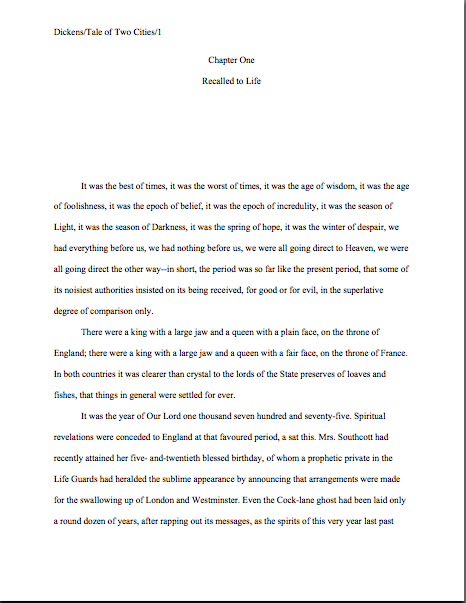
Now, this voice is certainly distinctive, isn’t it? Hard to conceive of a more memorable opening, rhythmically speaking. But it’s also true that if these were the first two paragraphs of a submission, pretty much any professional reader today would have rejected it by line three.
Close your eyes, channel Millicent, and tell me why.
If you said that it was because the first paragraph is one interminable run-on sentence — 119 words, connected incorrectly by commas, rather than semicolons, sacre bleu! — give yourself lollipop, a pat on the head, and an A for the day.
Ditto if you zeroed in upon the apparently random capitalization of nouns, the criminal punctuation choices, the ubiquitous logical contradictions. (Yes, I know Dickens meant it to be ironic; stop parroting your high school English teacher, or I’ll be forced to pull out my tattered copy of OF MICE AND MEN.) Or the fact that two paragraphs into the piece, the reader still has absolutely no idea who the protagonist is or what’s going on.
And can’t you just picture an editor furiously scribbling in the margins: “Which was it — the best of times or the worst of times? Commit to one or the other! Remember, the reader only knows what you tell him!”
However, there is a simpler, less obvious reason this first page just cries out for rejection — which will be abundantly apparent if you stand up right now, take two steps backward from your computer monitor, and take another look at Dickens’ opening.
See the visual pattern of word and phrase repetition? Millicent would have spotted it as soon as she pulled the first page out of the envelope.
I’ve seen wallpaper with more pattern variation. If you’ve been revising for a while (or if you paid close attention to the title of this post), you might have caught that the problem was repetition without backing away from your computer: the first ten verbs in the piece are identical, after all.
Yet it’s not just the repeated words and phrases that would raise professional readers’ weary eyebrows here: it’s the structural repetition, the phenomenon of consecutive sentences being set up in the same way. Or, in the disease’s more advanced form, when every second or third sentence boasts practically the same structure. Narratives where most sentences contain two verb phrases joined by the word and, for instance, or the ever-popular As X was happening, I did Y.
Dickens, bless his now-still heart, has provided us with a lulu of an example of why structural repetition is problematic in print. No matter how great your high school English teacher told you this particular opening was, it’s an undeniable fact that it’s dull for the reader to read the same It was X, it was Y sentence structure over and over again.
To be fair, though, any given sentence structure can become tiresome to a reader, if it is repeated often enough within too few lines of text. Even had Dickens wielded all of those semicolons correctly (which he didn’t, by current grammatical standards), Millicent would have known at a glance that an opening this repetitious was unlikely to be an easy sell, either to readers or to her boss, the agent.
And for precisely the same reason in both cases: it’s conceptually boring and hard on the eyes to read that many similarly-structured sentences in a row.
As we saw in all of today’s examples, a certain amount of structural repetition can provide a genuine forward momentum to a narrative. Many aspiring writers see that rhythm in the work of authors they admire and say, “Wow, that’s cool. By jingo, I’m going to make my paragraphs read like that!”
That’s a perfectly legitimate voice choice — provided that it is used sparingly. Like any magic trick, however, repetitive structure loses its ability to charm when the reader sees it too often; after a while, it can start to come across less as an interesting stylistic choice than as a sort of narrative tic.
How often is too often? Well, let me ask you: how many iterations of It was… did Dickens put you through before you first murmured, Oh, come on, Chuck; get on with it?
For Millicent, that number is likely to be as low as two, even if the repetition isn’t in consecutive sentences. Why so few? Well, editors are trained to zero in on redundancy and excise it, so it shouldn’t come as too much of a surprise to anybody that the contest judges, agents, and Millicents who cull the herd of submissions should develop a sensitivity to something likely to offend an editor’s sensibilities. If a particular stylistic choice is unlikely to sell to a publishing house, those whose job it is to find the bestsellers of tomorrow have to pay attention that editorial preference.
So yes, in answer to what practically all of you were thinking at the beginning of the last paragraph, a professional reader who has been at it a while — honestly may notice structural repetition the first time it occurs, not the seventh. But that’s a matter of speculation, as she is very, very unlikely to still be reading long enough to stumble upon #7.
Heck, it’s not all that uncommon for a professional reader to sit bolt upright in the middle of page 172, exclaiming indignantly, “Hey, this writer is reusing sentences!” if the first iteration occurred on page 3. Millicents tend to have good memories for text. So do agents, editors, contest judges, writing coaches, and pretty much everyone else who reads work-in-progress for a living.
Which is why, in case you’ve spent years speculating on the subject, recipients of professional feedback are so often stunned by assertions that their manuscripts use particular words or phrases constantly. To someone with a memory trained for editing, four times in a 300-page submission may feel pretty constant.
Don’t repeat yourself more than is absolutely necessary.
“Okay, okay,” I hear some of you rules lawyers out there murmuring, “I understand that Millicent is hyper-sensitive to reused sentences and repeated sentence structures. But as you pointed out yourself, Anne, many writers like to open and close their books with poetic rhythms; that doesn’t necessarily mean that the entire book will be written that way. A TALE OF TWO CITIES doesn’t continue repetitively, after all. So why doesn’t Millicent just assume that the device will end in a page or two and read on?”
Long-time readers, feel free to sing along: because Millicent seldom makes it all the way to the end of page one. She’s not in the habit of reading on until she gets to a patch of text she likes. (Too bad our pal Chuckles blew his chance by repeating himself so much, eh?)
I could sidestep the crux of the question by leaving it at that, but the real issue is why a professional reader would assume that the way a manuscript opens is necessarily indicative of what is to come. It’s an excellent question, because this assumption does underlie any rejection on page one. The fact is, though, that this presumption is not always inaccurate, at least with regard to redundancy. More often than not, when a manuscript opens with repetitive structure, it will continue with repetitive structure.
Hey, the writer thinks it sounds pretty. He’s been re-reading THE GREAT GATSBY lately.
Obviously, this renders invocatory repetition dangerous for a writer to use in the first pages of a submission. Or book proposal. Agents and editors are just so used to seeing structural repetition dotting submissions end to end that they’re all too likely — fairly or not — to conclude that to read on would be to be treated to the same type of sentence over and over, ad infinitum.
And that, my friends, would be less poetic than soporific.
Next time, I shall talk about ways to tell which is which in your writing, to figure out when and how invocatory rhythms will help your work. Keep up the good work!